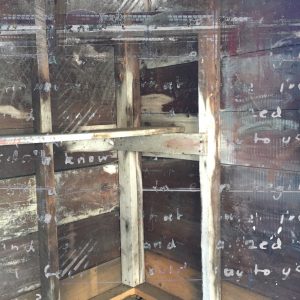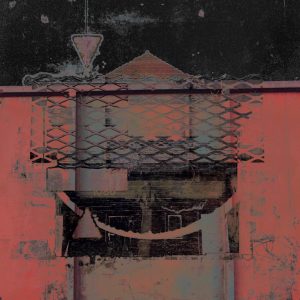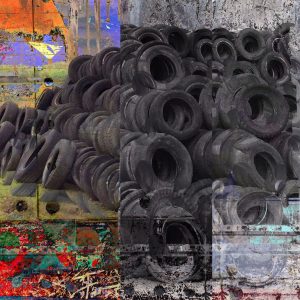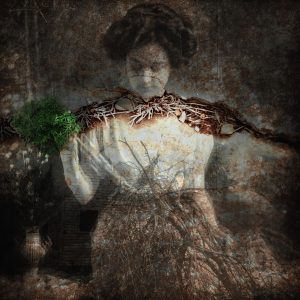Literary Terms
Jul 12th, 2021 by JGB
Below you will find a brief glossary of literary terms. Many more extensive glossaries can be found online. You might look here and here to determine which you find most helpful and easy to navigate. The glossary of fiction terms below has been adapted from Bedford/St. Martin Press. The definitions of poetry terms have been taken from the Poetry Foundation’s Glossary of Poetic Terms.
Fiction Terms
A narration or description usually restricted to a single meaning because its events, actions, characters, settings, and objects represent specific abstractions or ideas. Although the elements in an allegory may be interesting in themselves, the emphasis tends to be on what they ultimately mean. Characters may be given names such as Hope, Pride, Youth, and Charity; they have few if any personal qualities beyond their abstract meanings. These personifications are not symbols because, for instance, the meaning of a character named Charity is precisely that virtue. See also symbol.
Allusion
A brief reference to a person, place, thing, event, or idea in history or literature. Allusions conjure up biblical authority, scenes from Shakespeare’s plays, historic figures, wars, great love stories, and anything else that might enrich an author’s work. Allusions imply reading and cultural experiences shared by the writer and reader, functioning as a kind of shorthand whereby the recalling of something outside the work supplies an emotional or intellectual context, such as a poem about current racial struggles calling up the memory of Abraham Lincoln.
Archetype
A term used to describe universal symbols that evoke deep and sometimes unconscious responses in a reader. In literature, characters, images, and themes that symbolically embody universal meanings and basic human experiences, regardless of when or where they live, are considered archetypes. Common literary archetypes include stories of quests, initiations, scapegoats, descents to the underworld, and ascents to heaven.
Dénouement
A French term meaning “unraveling” or “unknotting,” used to describe the resolution of the plot following the climax.
Exposition
A narrative device, often used at the beginning of a work, that provides necessary background information about the characters and their circumstances. Exposition explains what has gone on before, the relationships between characters, the development of a theme, and the introduction of a conflict.
Foreshadowing
The introduction early in a story of verbal and dramatic hints that suggest what is to come later.
A literary device that uses contradictory statements or situations to reveal a reality different from what appears to be true. It is ironic for a firehouse to burn down, or for a police station to be burglarized. Verbal irony is a figure of speech that occurs when a person says one thing but means the opposite. Sarcasm is a strong form of verbal irony that is calculated to hurt someone through, for example, false praise.
Dramatic irony creates a discrepancy between what a character believes or says and what the reader or audience member knows to be true. Tragic irony is a form of dramatic irony found in tragedies such as Oedipus the King, in which Oedipus searches for the person responsible for the plague that ravishes his city and ironically ends up hunting himself.
Situational irony exists when there is an incongruity between what is expected to happen and what actually happens due to forces beyond human comprehension or control. The suicide of the seemingly successful main character in Edwin Arlington Robinson’s poem “Richard Cory” is an example of situational irony.
Cosmic irony occurs when a writer uses God, destiny, or fate to dash the hopes and expectations of a character or of humankind in general. In cosmic irony, a discrepancy exists between what a character aspires to and what universal forces provide. Stephen Crane’s poem “A Man Said to the Universe” is a good example of cosmic irony, because the universe acknowledges no obligation to the man’s assertion of his own existence.
Metaphor
A metaphor is a figure of speech that makes a comparison between two unlike things, without using the word like or as. Metaphors assert the identity of dissimilar things, as when Macbeth asserts that life is a “brief candle.” Metaphors can be subtle and powerful, and can transform people, places, objects, and ideas into whatever the writer imagines them to be. An implied metaphor is a more subtle comparison; the terms being compared are not so specifically explained. For example, to describe a stubborn man  unwilling to leave, one could say that he was “a mule standing his ground.” This is a fairly explicit metaphor; the man is being compared to a mule. But to say that the man “brayed his refusal to leave” is to create an implied metaphor, because the subject (the man) is never overtly identified as a mule. Braying is associated with the mule, a notoriously stubborn creature, and so the comparison between the stubborn man and the mule is sustained. Implied metaphors can slip by inattentive readers who are not sensitive to such carefully chosen, highly concentrated language. An extended metaphor is a sustained comparison in which part or all of a poem consists of a series of related metaphors. Robert Francis’s poem “Catch” relies on an extended metaphor that compares poetry to playing catch. A controlling metaphor runs through an entire work and determines the form or nature of that work. The controlling metaphor in Anne Bradstreet’s poem “The Author to Her Book” likens her book to a child. Synecdoche is a kind of metaphor in which a part of something is used to signify the whole, as when a gossip is called a “wagging tongue,” or when ten ships are called “ten sails.” Sometimes, synecdoche refers to the whole being used to signify the part, as in the phrase “Boston won the baseball game.” Clearly, the entire city of Boston did not participate in the game; the whole of Boston is being used to signify the individuals who played and won the game. Metonymy is a type of metaphor in which something closely associated with a subject is substituted for it. In this way, we speak of the “silver screen” to mean motion pictures, “the crown” to stand for the king, “the White House” to stand for the activities of the president
unwilling to leave, one could say that he was “a mule standing his ground.” This is a fairly explicit metaphor; the man is being compared to a mule. But to say that the man “brayed his refusal to leave” is to create an implied metaphor, because the subject (the man) is never overtly identified as a mule. Braying is associated with the mule, a notoriously stubborn creature, and so the comparison between the stubborn man and the mule is sustained. Implied metaphors can slip by inattentive readers who are not sensitive to such carefully chosen, highly concentrated language. An extended metaphor is a sustained comparison in which part or all of a poem consists of a series of related metaphors. Robert Francis’s poem “Catch” relies on an extended metaphor that compares poetry to playing catch. A controlling metaphor runs through an entire work and determines the form or nature of that work. The controlling metaphor in Anne Bradstreet’s poem “The Author to Her Book” likens her book to a child. Synecdoche is a kind of metaphor in which a part of something is used to signify the whole, as when a gossip is called a “wagging tongue,” or when ten ships are called “ten sails.” Sometimes, synecdoche refers to the whole being used to signify the part, as in the phrase “Boston won the baseball game.” Clearly, the entire city of Boston did not participate in the game; the whole of Boston is being used to signify the individuals who played and won the game. Metonymy is a type of metaphor in which something closely associated with a subject is substituted for it. In this way, we speak of the “silver screen” to mean motion pictures, “the crown” to stand for the king, “the White House” to stand for the activities of the president
Narrator
The voice of the person telling the story, not to be confused with the author’s voice.
With a first-person narrator, the I in the story presents the point of view of only one character. The reader is restricted to the perceptions, thoughts, and feelings of that single character. For example, in Melville’s “Bartleby, the Scrivener,” the lawyer is the first-person narrator of the story. First-person narrators can play either a major or a minor role in the story they are telling.
An  unreliable narratorreveals an interpretation of events that is somehow different from the author’s own interpretation of those events. Often, the unreliable narrator’s perception of plot, characters, and setting becomes the actual subject of the story, as in Melville’s “Bartleby, the Scrivener.” Narrators can be unreliable for a number of reasons: they might lack self-knowledge (like Melville’s lawyer), they might be inexperienced, they might even be insane. Naive narrators are usually characterized by youthful innocence, such as Mark Twain’s Huck Finn or J. D. Salinger’s Holden Caulfield.
unreliable narratorreveals an interpretation of events that is somehow different from the author’s own interpretation of those events. Often, the unreliable narrator’s perception of plot, characters, and setting becomes the actual subject of the story, as in Melville’s “Bartleby, the Scrivener.” Narrators can be unreliable for a number of reasons: they might lack self-knowledge (like Melville’s lawyer), they might be inexperienced, they might even be insane. Naive narrators are usually characterized by youthful innocence, such as Mark Twain’s Huck Finn or J. D. Salinger’s Holden Caulfield.
An omniscient narrator is an all-knowing narrator who is not a character in the story and who can move from place to place and pass back and forth through time, slipping into and out of characters as no human being possibly could in real life. Omniscient narrators can report the thoughts and feelings of the characters, as well as their words and actions. The narrator of The Scarlet Letter is an omniscient narrator.
Editorial omniscience refers to an intrusion by the narrator in order to evaluate a character for a reader, as when the narrator of The Scarlet Letter describes Hester’s relationship to the Puritan community.
Narration that allows the characters’ actions and thoughts to speak for themselves is called neutral omniscience. Most modern writers use neutral omniscience so that readers can reach their own conclusions.
Limited omniscience occurs when an author restricts a narrator to the single perspective of either a major or minor character. The way people, places, and events appear to that character is the way they appear to the reader. Sometimes a limited omniscient narrator can see into more than one character, particularly in a work that focuses on two characters alternately from one chapter to the next. Short stories, however, are frequently limited to a single character’s point of view.
Plot
An author’s selection and arrangement of incidents in a story to shape the action and give the story a particular focus. Discussions of plot include not just what happens, but also how and why things happen the way they do. Stories that are written in a pyramidal pattern divide the plot into three essential parts. The first part is the rising action, in which complication creates some sort of conflict for the protagonist. The second part is the climax, the moment of greatest emotional tension in a narrative, usually marking a turning point in the plot at which the rising action reverses to become the falling action. The third part, the falling action (or resolution) is characterized by diminishing tensions and the resolution of the plot’s conflicts and complications. In medias res is a term used to describe the common strategy of beginning a story in the middle of the action. In this type of plot, we enter the story on the verge of some important moment.
Point of view
Refers to who tells us a story and how it is told. What we know and how we feel about the events in a work are shaped by the author’s choice of point of view. The teller of the story, the narrator, inevitably affects our understanding of the characters’ actions by filtering what is told through his or her own perspective.
The various points of view that writers draw upon can be grouped into two broad categories:
(1) the third-person narrator uses he, she, or they to tell the story  and does not participate in the action; and
and does not participate in the action; and
(2) the first-person narrator uses I and is a major or minor participant in the action.
In addition, a second-person narrator, you, is also possible, but is rarely used because of the awkwardness of thrusting the reader into the story, as in “You are minding your own business on a park bench when a drunk steps out and demands your lunch bag.”
An objective [or “dramatic”] point of view employs a third-person narrator who does not see into the mind of any character.From this detached and impersonal perspective, the narrator reports action and dialogue without telling us directly what the characters think and feel. Since no analysis or interpretation is provided by the narrator, this point of view places a premium on dialogue, actions, and details to reveal character to the reader.
Protagonist
The main character of a narrative; its central character who engages the reader’s interest and empathy.
Resolution
The conclusion of a plot’s conflicts and complications. The resolution, also known as the falling action, follows the climax in the plot. See also dénouement, plot.
Setting
The physical and social context in which the action of a story occurs. The major elements of setting are the time, the place, and the social environment that frames the characters. Setting can be used to evoke a mood or atmosphere that will prepare the reader for what is to come.
Symbol
A person, object, image, word, or event that evokes a range of additional meaning beyond and usually more abstract than its literal significance. Symbols are educational devices for evoking complex ideas without having to resort to painstaking explanations that would make a story more like an essay than an experience.
Conventional symbols have meanings that are widely recognized by a society or culture.Some conventional symbols are the Christian cross, the Star of David, a swastika, or a nation’s flag. Writers use conventional symbols to reinforce meanings. Kate Chopin, for example, emphasizes the spring setting in “The Story of an Hour” as a way of suggesting the renewed sense of life that Mrs. Mallard feels when she thinks herself free from her husband.
A literary or contextual symbol can be a setting, character, action, object, name, or anything else in a work that maintains its literal significance while suggesting other meanings. Such symbols go beyond conventional symbols; they gain their symbolic meaning within the context of a specific story. For example, the white whale in Melville’s Moby-Dick takes on multiple symbolic meanings in the work, but these meanings do not automatically carry over into other stories about whales. The meanings suggested by Melville’s whale are specific to that text; therefore, it becomes a contextual symbol.
Poetry Terms
Alliteration
- The repetition of initial stressed, consonant sounds in a series of words within a phrase or verse line. Alliteration need not reuse all initial consonants; “pizza” and “place” alliterate. Example: “With swift, slow; sweet, sour; adazzle, dim” from Gerard Manley Hopkins’s “Pied Beauty.” Browse poems with alliteration.
Assonance
- The repetition of vowel sounds without repeating consonants; sometimes called vowel rhyme. See Amy Lowell’s “In a Garden” (“With its leaping, and deep, cool murmur”) or “The Taxi” (“And shout into the ridges of the wind”). Browse poems with assonance.
Caesura
- A stop or pause in a metrical line, often marked by punctuation or by a grammatical boundary, such as a phrase or clause. A medial caesura splits the line in equal parts, as is common in Old English poetry (see Beowulf). Medial caesurae (plural of caesura) can be found throughout contemporary poet Derek Walcott’s “The Bounty.”When the pause occurs toward the beginning or end of the line, it is termed, respectively, initial or terminal. Elizabeth Barrett Browning’s “Mother and Poet” contains both initial (“Dead! One of them shot by sea in the east”) and terminal caesurae (“No voice says ‘My mother’ again to me. What?”)
Consonance
- A resemblance in sound between two words, or an initial rhyme (see also Alliteration). Consonance can also refer to shared consonants, whether in sequence (“bed” and “bad”) or reversed (“bud” and “dab”). Browse poems with consonance.
Ekphrasis
- “Description” in Greek. An ekphrastic poem is a vivid description of a scene or, more commonly, a work of art. Through the imaginative act of narrating and reflecting on the “action” of a painting or sculpture, the poet may amplify and expand its meaning…Browse more ekphrastic poems.
Elegy
- In traditional English poetry, it is often a melancholy poem that laments its subject’s death but ends in consolation. Examples include John Milton’s “Lycidas”; Alfred, Lord Tennyson’s “In Memoriam”; and Walt Whitman’s “When Lilacs Last in the Dooryard Bloom’d.” Browse more elegies.
End-stopped
- A metrical line ending at a grammatical boundary or break—such as a dash or closing parenthesis—or with punctuation such as a colon, a semicolon, or a period. A line is considered end-stopped, too, if it contains a complete phrase. Many of Alexander Pope’s couplets are end-stopped, as in this passage from “An Essay on Man: Epistle I”:Then say not man’s imperfect, Heav’n in fault;
Say rather, man’s as perfect as he ought:
His knowledge measur’d to his state and place,
His time a moment, and a point his space.
If to be perfect in a certain sphere,
What matter, soon or late, or here or there?
The blest today is as completely so,
As who began a thousand years ago.The opposite of an end-stopped line is an enjambed line.
Enjambment
The running-over of a sentence or phrase from one poetic line to the next, without terminal punctuation; the opposite of end-stopped. William Carlos Williams’s “Between Walls” is one sentence broken into 10 enjambed lines:
the back wings
of the
hospital where
nothing
will grow lie
cinders
in which shine
the broken
pieces of a green
bottle
Ghazal
(Pronounciation: “guzzle”) Originally an Arabic verse form dealing with loss and romantic love, medieval Persian poets embraced the ghazal, eventually making it their own. Consisting of syntactically and grammatically complete couplets, the form also has an intricate rhyme scheme. Each couplet ends on the same word or phrase (the radif), and is preceded by the couplet’s rhyming word (the qafia, which appears twice in the first couplet). The last couplet includes a proper name, often of the poet’s. In the Persian tradition, each couplet was of the same meter and length, and the subject matter included both erotic longing and religious belief or mysticism. English-language poets who have composed in the form include Adrienne Rich, John Hollander, and Agha Shahid Ali; see Ali’s “Tonight”and Patricia Smith’s “Hip-Hop Ghazal.”
Imagery
- Elements of a poem that invoke any of the five senses to create a set of mental images.Specifically, using vivid or figurative language to represent ideas, objects, or actions. Poems that use rich imagery include T.S. Eliot’s “Preludes,” Percy Bysshe Shelley’s “Ode to the West Wind,” Sylvia Plath’s “Daddy,” and Mary Oliver’s “At Black River.”
Internal Rhyme
Rhyme that occurs within a single line of verse.
Litany
- Initially a prayer or supplication used in formal and religious processions, the litany has been more recently adopted as a poetic form that catalogues a series. This form typically includes repetitious phrases or movements, sometimes mimicking call-and-response. These examples by Luis Chaves, Richard Siken, and Cory Wade are poems explicitly noted as litanies, while others such as Ginsberg’s “Kaddish” sustain the form’s elements throughout.
Metonymy
- A figure of speech in which a related term is substituted for the word itself. Often the substitution is based on a material, causal, or conceptual relation between things. For example, the British monarchy is often referred to as the Crown. In the phrase “lend me your ears,” “ears” is substituted for “attention.” “O, for a draught of vintage!” exclaims the speaker in John Keats’s “Ode to Nightingale,” with “vintage” understood to mean “wine.” Synecdoche is closely related to metonymy.
Occasional Poem
- A poem written to describe or comment on a particular event and often written for a public reading. Alfred, Lord Tennyson’s “The Charge of the Light Brigade” commemorates a disastrous battle in the Crimean War. George Starbuck wrote “Of Late” after reading a newspaper account of a Vietnam War protester’s suicide. Elizabeth Alexander’s “Praise Song for the Day” was written for the inauguration of President Barack Obama. See also elegy, epithalamion, and ode.
Onomatopoeia
- A figure of speech in which the sound of a word imitates its sense (for example, “choo-choo,” “hiss,” or “buzz”). In “Piano,” D.H. Lawrence describes the “boom of the tingling strings” as his mother played the piano, mimicking the volume and resonance of the sound (“boom”) as well as the fine, high-pitched vibration of the strings that produced it (“tingling strings”).
Persona
- A dramatic character, distinguished from the poet, who is the speaker of a poem. The persona who describes the process of composing and playing music in Robert Browning’s “Abt Vogler”is a German organist by the same name. Similarly, three historical figures (Erasmus Darwin, James Whitfield, and Josiah Wedgewood) narrate Linda Bierds’s three-part poem “The Ghost Trio.”The identity of the speaker is not always so clear; John Berryman’s sequence of Dream Songs is narrated primarily by a persona named Henry, who refers to himself in the third person.
Prose Poem
- A prose composition that, while not broken into verse lines, demonstrates other traits such as symbols,metaphors, and other figures of speech common to poetry. See Amy Lowell’s “Bath,”“Metals Metals” by Russell Edson, “Information” by David Ignatow, and Harryette Mullen’s “[Kills bugs dead.]” Browse more prose poems.
Refrain
- A phrase or line repeated at intervals within a poem, especially at the end of a stanza. See the refrain “jump back, honey, jump back” in Paul Lawrence Dunbar’s “A Negro Love Song” or “return and return again” in James Laughlin’s “O Best of All Nights, Return and Return Again.” Browse poems with a refrain.
Rhyme
- The repetition of syllables, typically at the end of a verse line. Rhymed words conventionally share all sounds following the word’s last stressed syllable. Thus “tenacity” and “mendacity” rhyme, but not “jaundice” and “John does,” or “tomboy” and “calm bay.” A rhyme scheme is usually the pattern of end rhymes in a stanza, with each rhyme encoded by a letter of the alphabet, from aonward (ABBA BCCB, for example). Rhymes are classified by the degree of similarity between sounds within words, and by their placement within the lines or stanzas.–Eye rhyme rhymes only when spelled, not when pronounced. For example, “through” and “rough.”–End rhyme, the most common type, is the rhyming of the final syllables of a line. See “Midstairs”by Virginia Hamilton Adair:And here on this turning of the stair
Between passion and doubt,
I pause and say a double prayer,
One for you, and one for you;
And so they cancel out.–Feminine rhyme applies to the rhyming of one or more unstressed syllables, such as “dicing” and “enticing.” Ambrose Bierce’s “The Day of Wrath” employs feminine rhyme almost exclusively.–Half rhyme is the rhyming of the ending consonant sounds in a word (such as “tell” with “toll,” or “sopped” with “leapt”). This is also termed “off-rhyme,” “slant rhyme,” or apophany. See consonance.–Internal rhyme is rhyme within a single line of verse.
–Masculine rhyme describes those rhymes ending in a stressed syllable, such as “hells” and “bells.” It is the most common type of rhyme in English poetry.
See also alliteration, assonance, and onomatopoeia. Browse poems with rhymed stanzas.
Rhythm
- An audible pattern in verse established by the intervals between stressed syllables. “Rhythm creates a pattern of yearning and expectation, of recurrence and difference,” observes Edward Hirsch in his essay on rhythm, “Out of the Cradle Endlessly Rocking.” See also meter.

